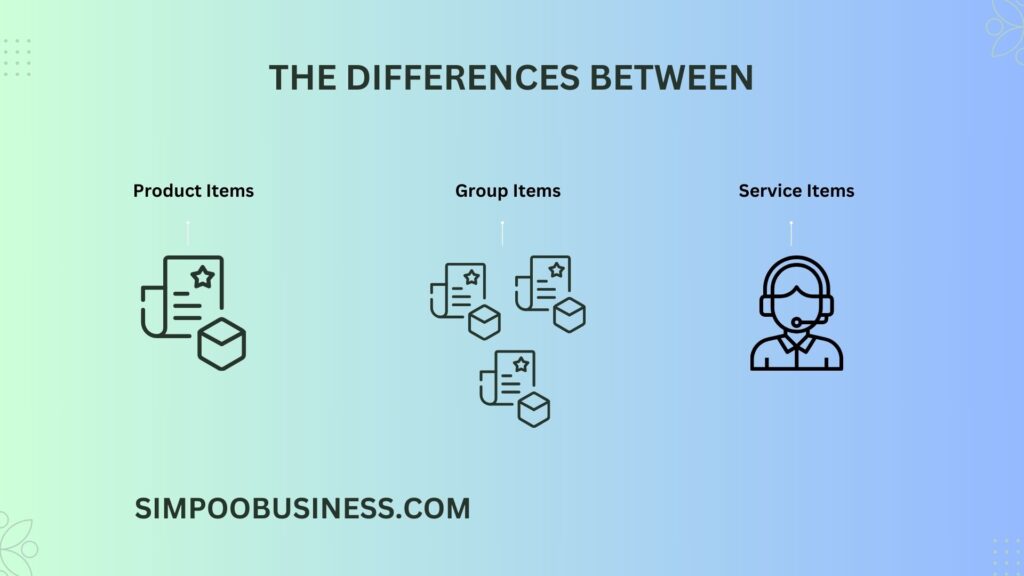
Inventory management is essential for ensuring smooth business operations and accurate stock levels. Two crucial processes within this field are inventory reconciliation and stock count. While they are related, they serve distinct purposes and involve different methodologies. In this blog post, we will explore the similarities and differences between these two processes and highlight how SimpooBusiness Inventory Management System offers an intuitive solution to streamline them.
Introduction to Inventory Reconciliation

Inventory reconciliation is the process of comparing the physical count of inventory with the records maintained in the inventory management system. This ensures that the recorded inventory levels match the actual stock available, identifying any discrepancies that need to be addressed, an example is when an item expired, damaged or got stolen, the only way to take the quantity out of the system is through inventory reconciliation, and this can be done frequently (anytime).
Importance
Inventory reconciliation is vital for several reasons:
- Accuracy: Ensures that the inventory records are precise, providing a true picture of stock levels.
- Financial Management: Helps in accurate financial reporting and cost management.
- Operational Efficiency: Prevents stockouts or overstocking, ensuring smooth business operations.
- Loss Prevention: Identifies discrepancies that may indicate theft, damage, or administrative errors.
Also See: The Differences Between Product Item, Service Item, and Kit Item in Inventory Management
Understanding Stock Count

A stock count, also known as a physical inventory count, involves physically counting the items in inventory to verify the quantity of stock on hand. This can be done manually or using barcode scanners and other technologies.
Importance
Stock counts are essential for:
- Inventory Accuracy: Verifying the actual quantity of inventory against recorded data.
- Identifying Discrepancies: Detecting losses, damages, or errors in record-keeping.
- Regulatory Compliance: Ensuring compliance with accounting and auditing standards.
- Financial Accuracy: Providing accurate data for financial statements and audits.
Similarities Between Inventory Reconciliation and Stock Count
Both inventory reconciliation and stock count are critical for maintaining accurate inventory records. They share the following similarities:
Purpose
Both processes aim to ensure that the inventory data accurately reflects the actual stock levels. This helps in making informed business decisions and maintaining operational efficiency.
Importance for Financial Reporting
Accurate inventory records are essential for financial reporting. Both reconciliation and stock count contribute to providing precise data for financial statements, audits, and regulatory compliance.
Role in Loss Prevention
Both processes help identify discrepancies that may indicate theft, damage, or administrative errors, contributing to loss prevention and better inventory control.
Key Differences Between Inventory Reconciliation and Stock Count
Purpose
- Inventory Reconciliation: Aims to align the recorded inventory data with the physical inventory to identify and rectify discrepancies.
- Stock Count: Focuses on obtaining an accurate count of physical inventory at a given point in time.
Process
- Inventory Reconciliation: Involves comparing the physical stock count with inventory records, investigating discrepancies, and making necessary adjustments.
- Stock Count: Involves physically counting all items in inventory, often involving temporary suspension of operations to ensure accuracy.
Frequency
- Inventory Reconciliation: Typically conducted periodically, such as monthly, quarterly, or annually.
- Stock Count: Can be conducted more frequently, such as daily, weekly, or during specific periods like end-of-year or end-of-quarter.
Outcomes
- Inventory Reconciliation: Results in adjusted inventory records that reflect accurate stock levels.
- Stock Count: Provides a snapshot of the current physical inventory levels, which may lead to further reconciliation if discrepancies are found.
Challenges in Inventory Reconciliation and Stock Count
Common Issues
- Human Error: Mistakes during data entry or counting can lead to inaccuracies.
- Theft and Loss: Unaccounted-for losses can skew inventory data.
- Damages: Damaged goods not properly recorded can cause discrepancies.
- Complexity: Large inventories with diverse items can complicate the counting and reconciliation processes.
Impact on Business
- Financial Losses: Inaccurate inventory can lead to financial discrepancies and losses.
- Operational Delays: Stockouts or overstocking can disrupt business operations.
- Customer Satisfaction: Inaccurate inventory levels can result in unmet customer demand or excess inventory taking up valuable storage space.
Best Practices for Effective Inventory Management
Accurate Data Entry
Ensuring accurate data entry is fundamental. Implementing barcode scanning and automated systems can reduce human error and improve accuracy.
Regular Audits
Conducting regular audits helps in maintaining accurate inventory records and identifying discrepancies early.
Technology Integration
Integrating advanced inventory management systems, like SimpooBusiness, can streamline the reconciliation and stock count processes, ensuring accuracy and efficiency.
Also See: Leveraging Paylater and Layaway to Enhance Your Business’s Service Standards
SimpooBusiness: An Intuitive Solution
Features of SimpooBusiness Inventory Management System
SimpooBusiness offers a comprehensive inventory management solution designed to simplify and enhance inventory reconciliation and stock count processes. Key features include:
- Automated Reconciliation: Automates the comparison of physical and recorded inventory, reducing manual effort and error.
- Real-Time Tracking: Provides real-time updates on inventory levels, ensuring accurate data at all times.
- Advanced Reporting: Generates detailed reports on inventory discrepancies, stock levels, and trends.
- User-Friendly Interface: Easy-to-use interface that requires minimal training, making it accessible to all staff members.
Benefits
Using SimpooBusiness for inventory management offers several benefits:
- Increased Accuracy: Reduces errors through automation and real-time tracking.
- Efficiency: Streamlines the reconciliation and stock count processes, saving time and resources.
- Enhanced Decision-Making: Provides accurate data for better inventory and financial management decisions.
- Scalability: Adapts to the needs of growing businesses, ensuring continued efficiency and accuracy.
Conclusion
Inventory reconciliation and stock count are essential components of effective inventory management. While they share similarities in their purpose and importance, they also have distinct differences in their processes and outcomes. Implementing best practices and leveraging advanced tools like SimpooBusiness Inventory Management System can significantly enhance these processes, providing businesses with accurate, real-time data and streamlined operations. By adopting these strategies, businesses can achieve greater accuracy, efficiency, and profitability in their inventory management efforts.
With this comprehensive guide, you now have a clearer understanding of inventory reconciliation, stock count, their similarities, differences, and the best practices to implement for effective inventory management. SimpooBusiness stands out as an intuitive and powerful solution, making these tasks easier and more accurate for businesses of all sizes.






